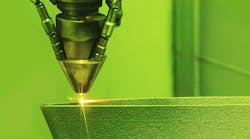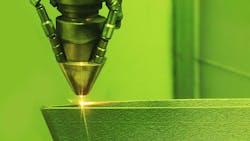Small defects in 3D printed metal parts limit their performance and are roadblocks preventing the technology from being more widely used. Researchers at Argonne National Laboratory theorized that the defects stemmed from small voids in the cooled printed metal. The voids (porosity) can make printed components prone to cracking and other failures.
To check their theory, they used a 3D printer with an IR camera, a common option, to film the printing process from above. It monitored and recorded temperature data during the build process. At the same time, a high-powered X-ray from the Advanced Photon Source at Argonne took a side view of the build it was underway. The goal was to use the X-rays to see voids form and correlate that with what was going on thermally on the surface where new metal was being deposited.
The test results show a correlation between surface temperature and porosity formation below the surface. For example, when the peak surface temperature is low and then steadily declines, there are few subsurface voids. But when surface temperatures are high, then dip, then later climb, there are many voids.
The team relied on machine learning algorithms to tease findings out of the complex data and predict void formation from the thermal history. But the Argonne approach needed only limited data compared to larger tech companies that use the general technique and need millions of data points.
And although 3D printers typically come with IR cameras, no researchers have access to the kind of high-powered X-rays available at Argonne. The team is confident, however, that it can devise a way to get around the need for such an expensive X-ray tool.
“By correlating results from Argonne’s X-rays with less detailed results we can get from printers with IR cameras, we can accurately predict if there are voids or not without having to see below the surface,” says Ben Gould, a materials scientist at Argonne.
The team’s goal is to use temperature data taken when a part is printed to predict void formation so they can be fixed immediately.

